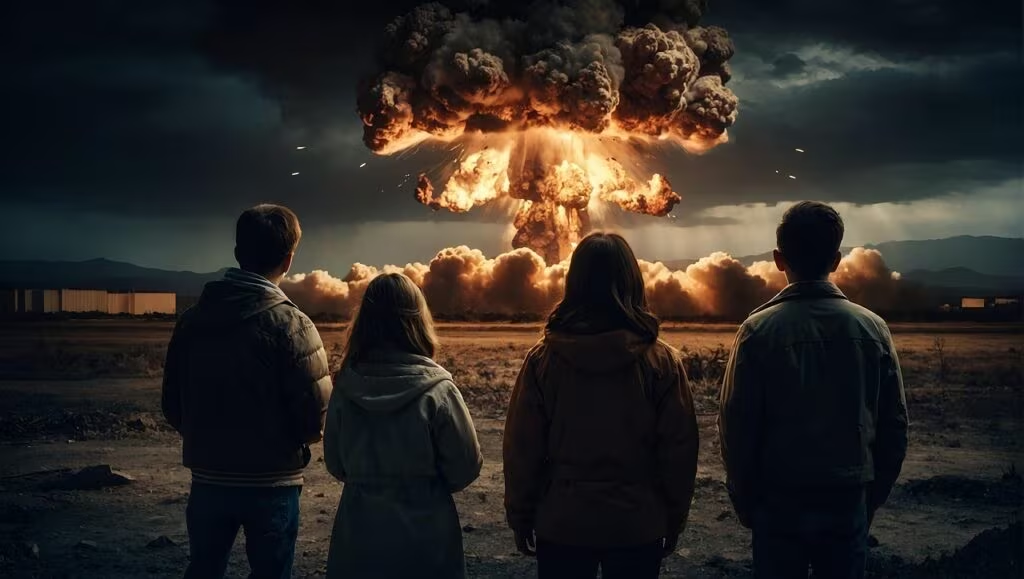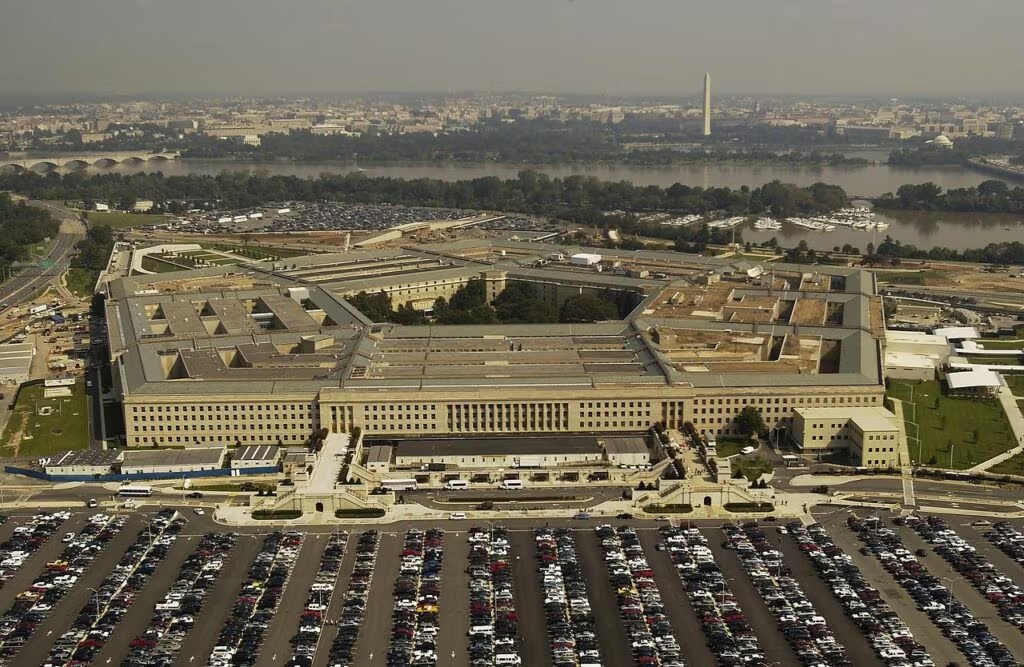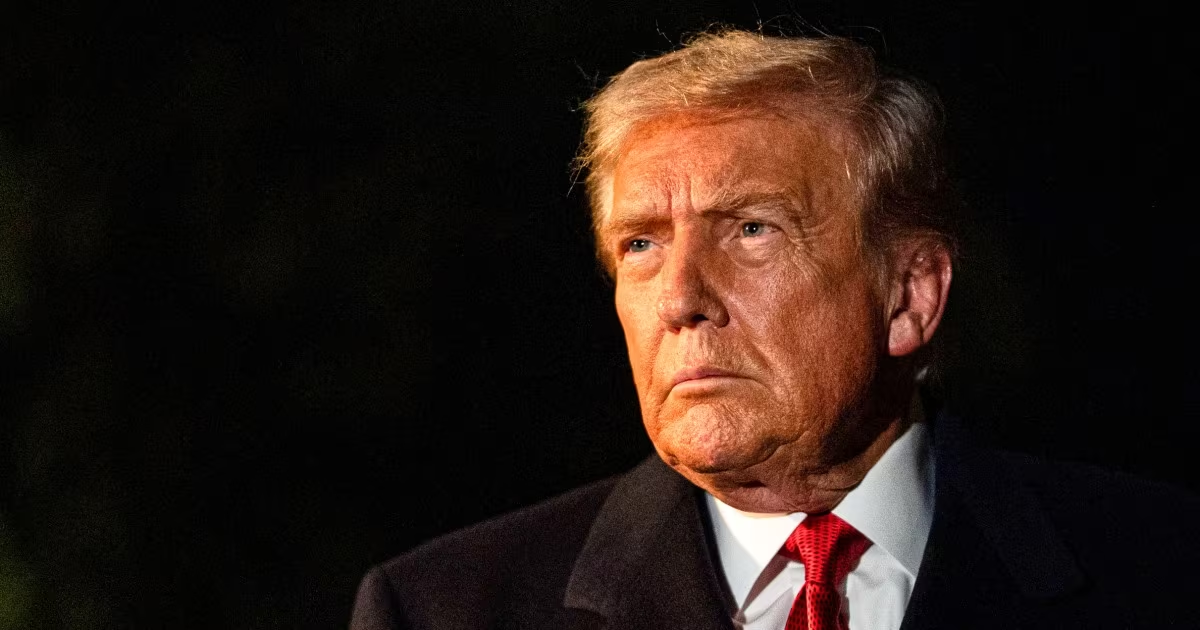The Immediate Directive: Breaking a Three-Decade Moratorium
During a period of heightened global tension, former President Donald Trump issued a directive to the Defense Department instructing them to “immediately” begin preparations for the resumption of nuclear weapons testing. This unprecedented order, delivered during a trip to Gyeongju, South Korea, signaled a dramatic potential shift in U.S. national security policy, challenging a voluntary moratorium that had been in place for over three decades.

The instruction was reportedly justified by the President due to concerns over “other countries testing programs.” While the United States has continued to maintain the safety and reliability of its nuclear arsenal through advanced simulation and subcritical experiments, a return to full-scale explosive testing would represent the most significant reversal of U.S. nuclear non-proliferation policy since the Cold War.
The Context of the 1992 Moratorium
To understand the gravity of the order, it is essential to review the history of U.S. nuclear testing policy. The United States last conducted a full-scale nuclear explosive test in 1992. Since then, both Republican and Democratic administrations have upheld a voluntary moratorium on such tests.
This policy was formalized globally with the Comprehensive Nuclear-Test-Ban Treaty (CTBT), which opened for signatures in 1996. While the U.S. signed the CTBT, it has never been ratified by the Senate. Despite this, the U.S. has consistently adhered to the treaty’s core principle: zero explosive testing.
Maintaining the Stockpile Without Explosions
Instead of full-scale testing, the U.S. relies on the Stockpile Stewardship Program (SSP), managed by the National Nuclear Security Administration (NNSA). This program uses sophisticated scientific tools and facilities to ensure the reliability and safety of the existing nuclear arsenal. Key components of the SSP include:
- Advanced Supercomputing: Using high-fidelity simulations to model weapon performance.
- Subcritical Experiments: Tests conducted underground that use chemical explosives but do not initiate a nuclear chain reaction, thus complying with the CTBT and the moratorium.
- Component Refurbishment: Modernizing and replacing aging warhead components.
An order to resume full-scale explosive testing would bypass the SSP’s current operational framework and require the immediate preparation of test sites, most notably the Nevada National Security Site (NNSS), formerly the Nevada Test Site.
Geopolitical Implications and International Reaction
President Trump’s rationale for the order—citing the testing programs of other nations—directly pointed to the perceived actions of nuclear rivals, primarily Russia and China, and the ongoing missile and nuclear development by North Korea.
Resuming testing would carry severe geopolitical risks, potentially triggering a new nuclear arms race. Experts widely agree that such a move would provide immediate justification for other nuclear-armed states to abandon their own testing restraints, leading to a rapid escalation of global tensions.

“The resumption of nuclear explosive testing by the United States would be viewed globally as a profound act of de-escalation by the world’s leading nuclear power,” stated one international security analyst at the time. “It would effectively dismantle the fragile framework of global non-proliferation that has been built over decades.”
The immediate international reaction was one of alarm, with key allies expressing concern that the move would erode U.S. credibility as a proponent of arms control and embolden nations seeking to develop their own nuclear capabilities.
The Role of the Pentagon
The order to the Defense Department placed the Pentagon in a difficult position. Resuming testing is a complex, multi-agency effort requiring significant resources, time, and political capital. While the President’s directive was to begin immediately, the logistical and technical hurdles involved in preparing the Nevada site for a full-scale test are substantial, typically requiring months of preparation.
Furthermore, the order faced internal resistance from officials who recognized the diplomatic and strategic costs of abandoning the moratorium, especially without clear evidence that the existing stockpile stewardship program was failing.
The Aftermath and Current Status (2025 Perspective)
Despite the explicit and immediate nature of the order, no full-scale nuclear explosive test was conducted following the directive. The order, while politically significant, was ultimately absorbed into the complex bureaucratic and legal processes governing nuclear policy.
In the years following the directive, the debate over nuclear modernization and testing capability has continued, but the U.S. has maintained its adherence to the 1992 moratorium. The current administration, in 2025, continues to prioritize the Stockpile Stewardship Program as the primary means of ensuring the safety and reliability of the nuclear deterrent.

Key Policy Questions Raised by the Order
President Trump’s directive forced a public and internal reckoning with several critical questions regarding U.S. nuclear posture:
- Deterrence Strategy: Is the current non-explosive testing regime sufficient to maintain a credible deterrent against rising nuclear powers?
- Treaty Compliance: Should the U.S. formally ratify the CTBT, or should it maintain the flexibility to resume testing if necessary?
- Stockpile Reliability: Are the NNSA’s simulation capabilities truly adequate to guarantee the long-term viability of the arsenal without physical testing?
While the immediate order was not executed, the fact that a sitting President directed the resumption of testing highlights the fragility of the long-standing moratorium and the perpetual tension between maintaining a modern nuclear deterrent and upholding global non-proliferation norms.
Key Takeaways
- The Directive: Former President Donald Trump ordered the Defense Department to immediately resume nuclear weapons testing, citing the programs of rival nations.
- The Moratorium: The U.S. has observed a voluntary ban on full-scale nuclear explosive testing since 1992, relying instead on the Stockpile Stewardship Program (SSP).
- The Policy: Resuming testing would have violated the spirit of the Comprehensive Nuclear-Test-Ban Treaty (CTBT) and risked triggering a global nuclear arms race.
- The Outcome: Despite the explicit order, no full-scale explosive tests were conducted. The U.S. nuclear posture remains governed by the SSP and the voluntary moratorium as of 2025.
Conclusion: The Enduring Debate Over Nuclear Restraint
President Trump’s directive, though ultimately unrealized, serves as a powerful reminder of the delicate balance inherent in U.S. nuclear policy. The decision to resume testing is not merely a technical or military one; it is a profound political choice with cascading diplomatic consequences. The incident underscored that the decades-long commitment to non-explosive testing, while scientifically sound and diplomatically beneficial, is subject to the political will of any administration.
As the U.S. continues to modernize its nuclear triad in 2025, the debate over the necessity and wisdom of maintaining the 1992 moratorium will remain a central, high-stakes issue in national security discussions. The consensus among policy experts remains that the strategic cost of abandoning the moratorium—in terms of international stability and proliferation risk—far outweighs any perceived technical benefit.
Original author: Katherine Doyle
Originally published: October 30, 2025
Editorial note: Our team reviewed and enhanced this coverage with AI-assisted tools and human editing to add helpful context while preserving verified facts and quotations from the original source.
We encourage you to consult the publisher above for the complete report and to reach out if you spot inaccuracies or compliance concerns.

